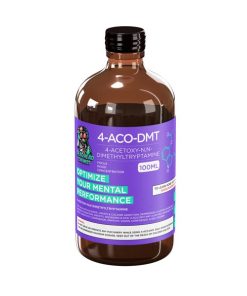-
×
 Microdose DMT Deadhead Chemist
1 × $230.00
Microdose DMT Deadhead Chemist
1 × $230.00 -
 Mystery Pack (Staff Pick)
Mystery Pack (Staff Pick)
- Type:
Free Product
1 × Free
Uncategorized
Shroom Edibles: What You Need to Know About Magic Mushroom Infused Treats
In recent years, the conversation around psychedelic substances has expanded beyond scientific studies and spiritual retreats into more accessible and creative formats — including shroom edibles. Just like cannabis-infused gummies and chocolates, psilocybin-infused edibles are becoming more common in underground markets and experimental wellness communities.
But what exactly are shroom edibles? How do they differ from other methods of consuming psilocybin, the active compound in “magic mushrooms”? And what should you know before considering them?
Let’s explore the world of shroom edibles, their effects, safety considerations, and legal status.
What Are Shroom Edibles?
Shroom edibles are food items — such as chocolates, gummies, truffles, teas, or baked goods — that have been infused with psilocybin, the psychoactive compound found in magic mushrooms (typically Psilocybe cubensis).
These edibles offer an alternative to consuming raw or dried mushrooms, often making the experience:
- More palatable (eliminating the earthy or bitter taste of raw mushrooms)
- Easier to dose (with labeled amounts per piece or serving)
- Less likely to cause nausea (a common side effect of raw mushrooms)
How Do Shroom Edibles Work?
When you consume shroom edibles, the psilocybin in them is absorbed through your digestive system and converted into psilocin — the active compound that affects the brain.
What Happens in the Brain:
- Psilocin binds to serotonin receptors (especially 5-HT2A), altering perception, mood, and cognition.
- The default mode network (DMN) — associated with ego, identity, and routine thought — becomes less active, often resulting in feelings of unity, insight, or “ego dissolution.”
Onset and Duration:
- Effects begin: 30 to 90 minutes after consumption
- Peak effects: 2 to 3 hours in
- Total duration: 4 to 6 hours, depending on dose and metabolism
Types of Shroom Edibles
- Gummies – Popular for microdosing or ease of use
- Chocolates – Masks flavor well; allows for controlled dosing
- Capsules – Often used for microdosing; no taste
- Baked Goods – Brownies or cookies infused with mushroom powder
- Teas or Tonics – Brewed with lemon or ginger to reduce nausea
Each type offers a different experience in terms of absorption rate, taste, and onset time.
Benefits of Shroom Edibles (Reported Anecdotally or Under Study)
⚠️ Note: Psilocybin is still considered a Schedule I drug in many countries and is only legal in select jurisdictions for therapeutic or research use.
That said, clinical research and anecdotal reports suggest that psilocybin (including via edibles) may help with:
- Reducing anxiety and depression (especially in treatment-resistant cases)
- Alleviating PTSD symptoms
- Increasing creativity and emotional insight
- Improving mindfulness and connection with nature or self
- Aiding end-of-life anxiety in terminally ill patients
Many of these effects are being studied in clinical trials with promising results — though always in controlled, therapeutic settings.
Risks and Side Effects
Despite their potential, shroom edibles are not without risks, especially when taken without proper guidance or in uncontrolled environments.
Common Side Effects:
- Nausea (especially with high doses)
- Disorientation or confusion
- Paranoia or anxiety (especially in unfamiliar or stressful settings)
- Hallucinations and altered sense of time or self
- “Bad trips” that may be psychologically distressing
Long-Term Risks (Though Rare):
- Triggering of latent psychotic disorders (e.g., schizophrenia)
- Emotional destabilization in vulnerable individuals
Because psilocybin alters perception and judgment, it’s crucial to avoid driving, operating machinery, or making major decisions while under the influence.
Dosing Guide (Approximate)
Always approach psilocybin edibles with caution, as potency can vary by product and individual tolerance.
| Dose Type | Psilocybin Amount | Effects |
|---|---|---|
| Microdose | 0.1–0.3g | Subtle mood, focus, no hallucinations |
| Low dose | 0.5–1g | Light visuals, enhanced emotion |
| Moderate dose | 1.5–2.5g | Strong visuals, altered sense of time |
| High dose | 3–5g+ | Intense experience, ego dissolution |
For edibles, dosing is usually labeled in milligrams of psilocybin. Always start low and go slow, especially with homemade or unregulated products.
Legal Status of Shroom Edibles
🌍 United States
- Federally illegal (Schedule I substance)
- Decriminalized in some cities/states: Oregon, Colorado, parts of California and Michigan
- Legal psilocybin therapy is emerging under strict medical supervision in Oregon
🇨🇦 Canada
- Illegal, but Health Canada allows access for medical and therapeutic use in limited cases
- A growing underground market for psilocybin edibles exists
🇬🇧 United Kingdom
- Psilocybin is a Class A drug, making all forms — including edibles — illegal
🇦🇺 Australia
- Recently approved for psychiatrist-led therapy in specific conditions
- Still illegal for recreational use
Always check local laws before possessing, consuming, or purchasing shroom edibles.
Harm Reduction Tips
If someone chooses to use shroom edibles, harm reduction practices are essential:
- Be in a safe, comfortable setting with trusted people
- Avoid mixing with alcohol or other substances
- Start with a low dose, especially if you’re new
- Have a trip sitter (sober support person) nearby
- Don’t use during times of emotional instability
- Keep hydrated, and prepare a calm post-experience space
Final Thoughts
Shroom edibles represent a modern, palatable way to explore the ancient psychedelic experience — but they’re not to be taken lightly. Whether for self-discovery, therapeutic potential, or curiosity, it’s important to approach with respect, caution, and responsibility.
As laws evolve and science continues to uncover the potential of psilocybin, the future of shroom edibles may shift from the underground into regulated, evidence-based wellness. Until then, education is the first and most important step.

